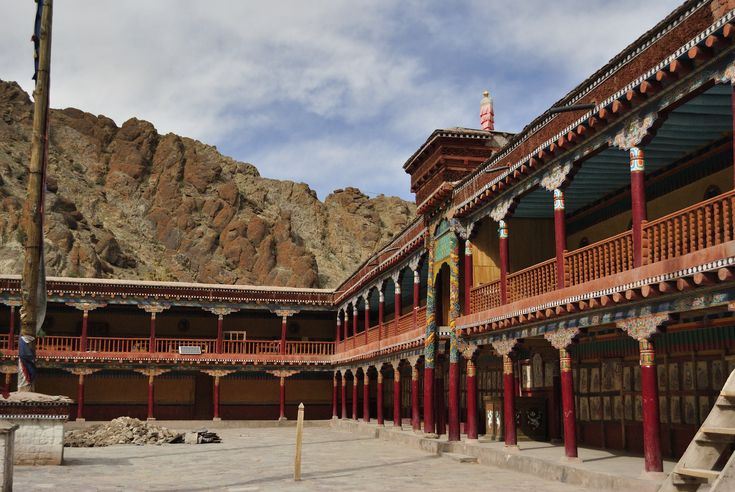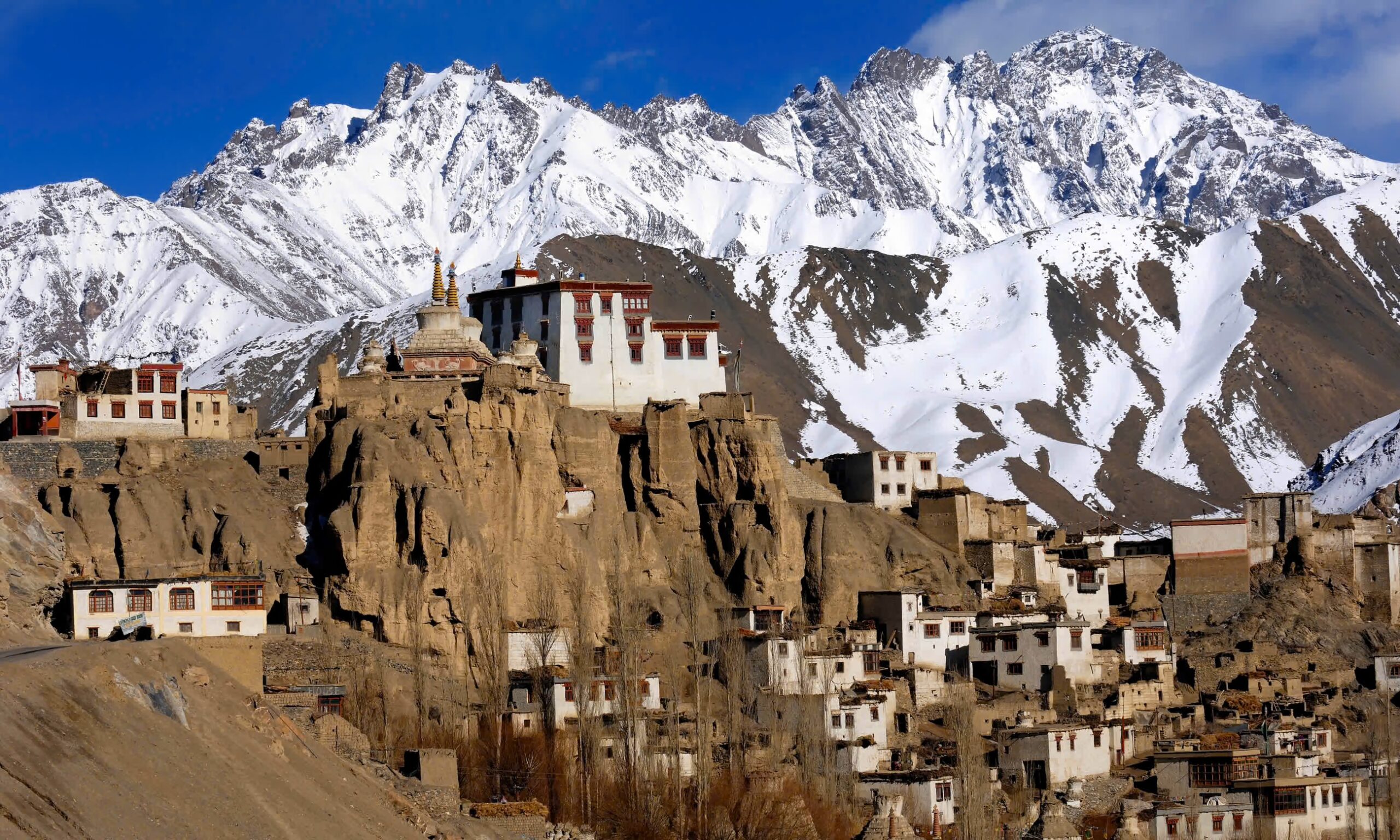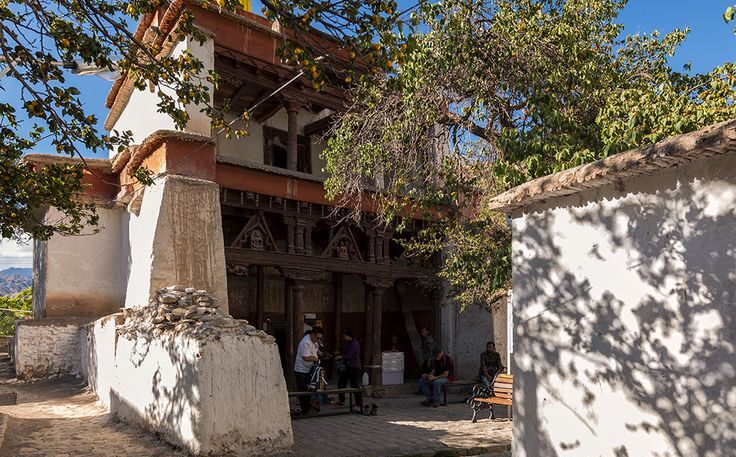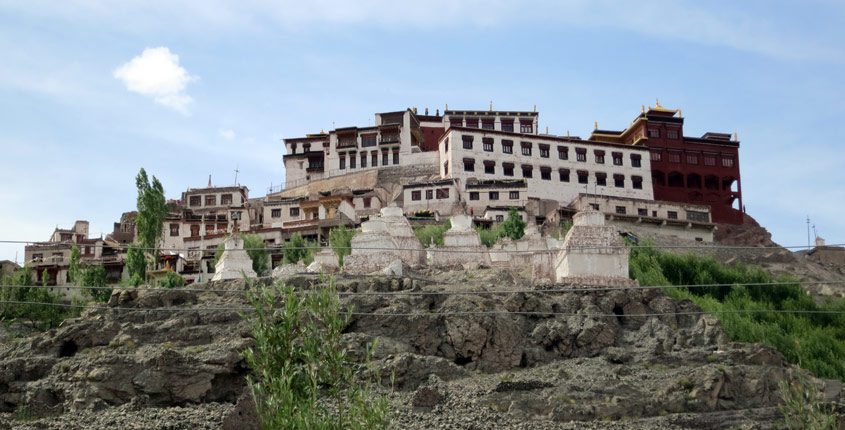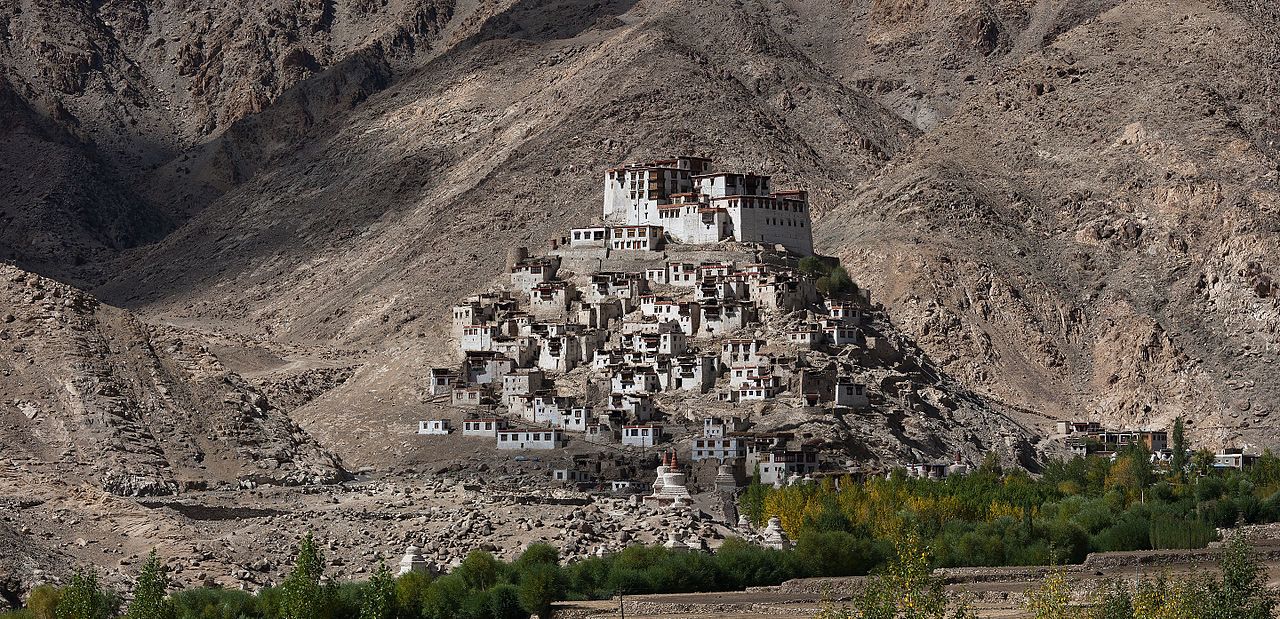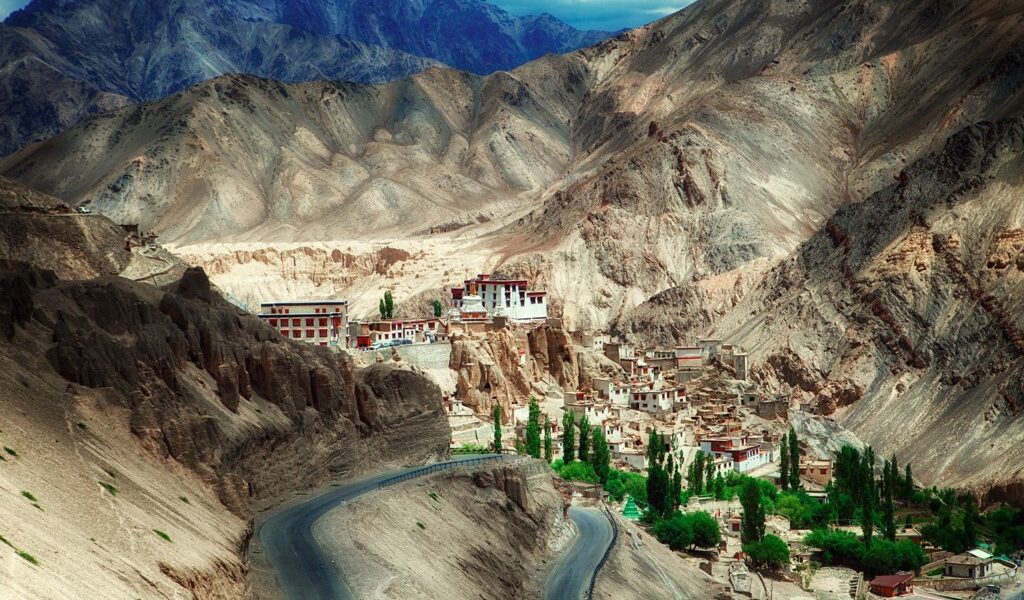Nestled in the stark landscapes of the Indian Himalayas, Ladakh’s hidden monasteries offer an incredible experience for those seeking peace, adventure, and a deep connection to Tibetan Buddhist culture. The remote trails to these secluded monasteries make for unforgettable treks that are both physically challenging and spiritually fulfilling.
From the famed Hemis Monastery to the offbeat trails leading to hidden gems, this journey through Ladakh reveals a side of the Himalayas few are fortunate to see.
Introduction to Ladakh’s Sacred Monasteries and Spiritual Treks
Discovering the Hidden Monasteries of Ladakh
The high-altitude deserts of Ladakh are home to some of the world’s most stunning and secluded Buddhist monasteries, many dating back centuries. These hidden monasteries are tucked away in valleys and atop rugged cliffs, adding to their mystical allure. Trekking through Ladakh’s hidden monasteries provides an opportunity to witness both the unique cultural heritage and breathtaking landscapes that characterize the region.
Why Trekking Through Ladakh’s Monastic Trails Is a Unique Spiritual Journey
Ladakh is more than just a trekking destination; it’s a spiritual pilgrimage. Following ancient monastic trails takes travelers through winding mountain paths, remote villages, and peaceful monasteries where time seems to stand still. Each stop along the way serves as a gateway to Ladakh’s rich traditions, making the journey as enriching as the destination.
Planning Your Ladakh Monastery Trek
Best Time for Trekking to Ladakh’s Hidden Monasteries
For a comfortable trekking experience, the best time to visit Ladakh’s monasteries is from May to September, when the weather is relatively mild and access to remote sites is feasible. Spring brings blooming wildflowers, while autumn offers clear skies and crisp air.

| Season |
Temperature Range |
Highlights |
| Spring (May-June) |
10-20°C |
Blooming wildflowers |
| Summer (July-August) |
15-25°C |
Peak trekking season |
| Autumn (September) |
5-15°C |
Clear skies and stunning landscapes |
“I visited in late summer, and the monasteries were breathtaking! The weather was perfect for trekking.”
– Emma Lindholm, Sweden, Travel Blogger
“Spring was beautiful in Ladakh, with colorful wildflowers lining the trails to the monasteries. Highly recommend this season.”
– Arjun Patel, India, Photographer
Preparing for High-Altitude Treks to Ladakh’s Monasteries
High-altitude trekking in Ladakh requires careful preparation. Acclimatization is crucial for minimizing the risk of altitude sickness, especially on routes that reach elevations above 3,500 meters. Essential gear includes high-quality hiking boots, layered clothing for varying temperatures, and trekking poles.
Iconic Hidden Monasteries in Ladakh
Hemis Monastery: Spiritual Hub of Ladakh
Hemis Monastery is one of the largest and most famous in Ladakh, dating back to the 17th century. Known for its annual Hemis Festival, the monastery attracts pilgrims and visitors from around the world. Located near the Indus River, it offers serene views and is adorned with vibrant murals and artifacts of Tibetan Buddhist culture.

“Hemis was truly the highlight of my Ladakh journey. The energy and architecture were mesmerizing.”
– Nina Rossi, Italy, Yoga Instructor
“Attending the Hemis Festival was a once-in-a-lifetime experience. I felt connected to the culture on such a deep level.”
– David Thompson, USA, Documentary Filmmaker
Lamayuru Monastery: The Oldest Monastery in Ladakh
The Lamayuru Monastery, often referred to as the “Moonland Monastery” due to the unique landscape that resembles the moon’s surface, is thought to be Ladakh’s oldest monastery. Perched at an altitude of 3,510 meters, Lamayuru offers sweeping views of the surrounding valleys, making it a favored destination for photographers and trekkers alike.

“The lunar landscape at Lamayuru is unlike anything I’ve seen. It’s surreal and peaceful.”
– Olga Kovalenko, Russia, Landscape Photographer
Alchi Monastery: Exploring Ancient Buddhist Murals
The Alchi Monastery stands out for its intricate and colorful murals that date back over a thousand years. Its artwork combines influences from Tibetan, Indian, and Kashmiri cultures, making it a fascinating site for those interested in ancient art. Alchi is set in a quiet village, offering a peaceful atmosphere that complements its rich cultural heritage.

Off-the-Beaten-Path Monasteries in Ladakh
Discovering Remote and Lesser-Known Monasteries in Ladakh
For those seeking solitude, remote monasteries like Phuktal and Sumda Chun provide serene escapes from the more visited sites. The trek to Phuktal Monastery is particularly striking, as the monastery is carved into a cliffside and accessible only by foot. Each step of these remote trails offers awe-inspiring views and opportunities for meditation and reflection.
Spiritual Solitude: Benefits of Visiting Secluded Monasteries
One of the biggest benefits of visiting lesser-known monasteries is the tranquility they offer. Without the crowds, visitors can experience a deep sense of peace and immersion, allowing time to observe monastic life and connect with the natural beauty of Ladakh.
“Phuktal Monastery is an absolute gem. The isolation makes the spiritual atmosphere even more profound.”
– Richard Nguyen, Vietnam, Travel Writer
Trekking Routes to Ladakh’s Sacred Monasteries
Popular Trekking Routes to Ladakh’s Monasteries
Several established trekking routes pass through Ladakh’s renowned monasteries, including the Markha Valley and Sham Valley treks. The Markha Valley trek offers a blend of cultural and natural attractions, winding through villages and monasteries with stunning views of the Zanskar Range.
Pilgrimage Trails and Sacred Paths of Ladakh
Beyond well-known trekking routes, Ladakh has a network of sacred paths used by pilgrims. These trails offer a rich blend of history, spirituality, and adventure, and many of them include stops at significant monasteries. The journey on these trails can be challenging, but the experience is deeply rewarding.

“The Markha Valley trek was challenging but incredibly fulfilling, with each monastery offering new insights into Ladakhi spirituality.”
– Ana Maria Gomez, Spain, Hiker
Cultural and Spiritual Insights into Ladakh’s Monasteries
Tibetan Buddhism and Rituals in Ladakh’s Monasteries
Ladakh’s monasteries follow Tibetan Buddhist traditions, with daily rituals that include chanting, prayer, and meditation. Visitors can often observe these practices firsthand, gaining insights into the monastic lifestyle and spiritual teachings. Each monastery has its unique rituals, reflecting its historical roots and regional influences.
Ladakhi Heritage and the Role of Monasteries in the Community
Monasteries in Ladakh are more than just places of worship; they play a central role in community life. They host festivals, provide education, and act as community gathering spaces, sustaining Ladakh’s rich cultural heritage.
Responsible Trekking and Eco-Tourism in Ladakh’s Monastic Regions
Tips for Respectful and Eco-Friendly Travel to Sacred Monasteries
Ladakh is a fragile ecosystem, and responsible travel practices are essential to preserving its natural and cultural heritage. Travelers are encouraged to respect local customs, avoid littering, and use eco-friendly products. Hiring local guides not only supports the economy but also enhances the trekking experience with authentic insights.
Supporting Ladakh’s Cultural Preservation Through Sustainable Tourism
Sustainable tourism plays a critical role in preserving Ladakh’s monasteries and traditions. By choosing eco-friendly accommodation, reducing waste, and supporting local businesses, visitors can contribute positively to the preservation of Ladakh’s heritage.

Practical Tips for Trekking Through Ladakh’s Hidden Monasteries
Packing Essentials for a Monastery Trek in Ladakh
Packing well is key for a successful trek. Essential items include a sturdy pair of hiking boots, thermal clothing, water purification tablets, and sunscreen. Having a small offering, like incense or a prayer scarf, is a respectful gesture when visiting monasteries.
Navigating Permits, Safety Tips, and Local Guidance
Permits are required for certain regions in Ladakh, so it’s essential to plan ahead. Additionally, hiring a local guide not only ensures safe passage through Ladakh’s challenging terrain but also provides a richer understanding of the cultural landscape.

Q&A Section
What is the best time to trek to monasteries in Ladakh?
Answer: The best time for trekking in Ladakh is from May to September, as the temperatures are moderate and most trails are accessible.
Are there beginner-friendly trekking routes to monasteries in Ladakh?
Answer: Yes, the Sham Valley trek is relatively easy and suitable for beginners, offering cultural immersion without extensive physical demands.
Can I visit monasteries without a trekking guide?
Answer: It’s possible, but hiring a guide enriches the experience with cultural insights and local knowledge.
What are the accommodation options near remote monasteries?
Answer: Options include homestays, guesthouses, and even some monasteries offer lodging for travelers, providing a unique cultural experience.
Is it safe to travel to secluded monasteries in Ladakh?
Answer: Generally, yes. However, taking precautions for altitude sickness and weather conditions, and hiring a guide, is advisable for safety and comfort.
Ladakh hidden monasteries
Ladakh hidden monasteries | The journey through Ladakh mirrors the very essence of unraveling unknown horizons, as its dramatic landscapes and unique cultural identity awaken the deepest sense of wonder and exploration. Ladakh hidden monasteries delves into this realm where inner peace intertwines with the wild, untouched beauty of Ladakh. From the snow-capped peaks to the serene monasteries, every step in Ladakh is a step toward self-discovery. The mountains, ancient paths, and unspoken mysteries stretch before travelers, offering a meditative experience where each encounter feels both effortless and transformative. Whether it’s trekking across remote valleys or sitting quietly beside a sacred lake, Ladakh invites those who seek a deeper connection to the natural and spiritual world.

Ladakh hidden monasteries
The monasteries of Ladakh stand as living monuments to the region’s profound spiritual heritage. With origins dating back over a thousand years, these ancient structures are both places of worship and repositories of art, culture, and wisdom. Hemis Monastery, one of the largest in Ladakh, is renowned for its annual festival, featuring colorful mask dances performed by monks. The history of these monasteries reflects Ladakh’s role as a crossroads between India, Tibet, and Central Asia, where religious and cultural influences have intertwined over the centuries.
The Tibetan Buddhist influence is especially evident in the architecture and daily life of the monks. Prayer wheels, intricate murals, and the soft hum of chants fill the air as visitors explore the monastery grounds. Each monastery, from the remote Lamayuru to the awe-inspiring Thiksey, offers a window into the spiritual heart of Ladakh. These centers of meditation, learning, and community life continue to thrive, preserving traditions that have shaped Ladakh for generations.
Why Visit Ladakh for Ladakh hidden monasteries?
Ladakh is a destination that transcends mere travel. It offers a journey that touches both the outer and inner landscapes, making it a perfect setting for those who seek to unravel their own unknown horizons. The region’s breathtaking scenery—from towering mountain ranges to hidden valleys—provides not just an escape but a space for contemplation and growth. Ladakh’s culture, deeply rooted in Buddhist practices, invites visitors to reflect on their own lives and the world around them.
Ladakh’s people, known for their warmth and hospitality, add to the richness of the experience. Villages like Sumda Chun and the legendary Nubra Valley introduce travelers to a way of life that is intricately connected to nature and spirituality. Staying in local homestays allows for immersive experiences where one can learn about traditional Ladakhi customs, share meals made from local produce, and participate in community rituals.

Beyond its natural beauty, Ladakh offers a unique opportunity to explore oneself. The vastness of the region’s plateaus and the clarity of its skies seem to mirror the vastness of the human spirit. Whether it’s standing atop a mountain pass at 18,000 feet or meditating in a centuries-old monastery, Ladakh helps unravel the unknown horizons within each traveler.
Finding the Best Ladakh hidden monasteries in Ladakh
Finding the best places in Ladakh to experience “Ladakh hidden monasteries” involves venturing off the beaten path. Ladakh’s lesser-known treks, such as those leading to secluded monasteries or high-altitude lakes, offer unparalleled opportunities for solitude and reflection. The Markha Valley trek, for instance, takes travelers through verdant valleys, ancient villages, and high-altitude passes, allowing for both physical and spiritual exploration.
Ladakh’s iconic lakes, including Pangong Tso and Tso Moriri, are ideal spots for quiet contemplation. Their still waters reflect the sky, creating a mesmerizing landscape that feels timeless and infinite. Sitting beside these lakes, especially at dawn or dusk, brings an overwhelming sense of peace and connection with nature.

For those interested in Ladakh’s spiritual heritage, exploring monasteries such as Alchi, Phyang, or Diskit can be a transformative experience. These sites are not just places of worship but also centers of art, philosophy, and wisdom. Visiting these monasteries, with their ancient murals and intricate statues, offers insight into Ladakh’s rich cultural tapestry.
Ladakh’s Atmosphere and Ladakh hidden monasteries
Ladakh’s atmosphere is unlike any other place on Earth. The stark contrasts between the rugged mountains and the serene, tranquil monasteries create an environment that feels both raw and sacred. The traditional decor in Ladakhi homes and religious sites reflects this balance, with mud-brick houses adorned with prayer flags and colorful thangkas (Buddhist paintings) that add warmth and spiritual meaning to the space.

The interiors of Ladakhi homes, often simple and functional, are filled with symbols of devotion. Small shrines dedicated to Buddhist deities are common, and the air is often fragrant with incense. The use of earthy materials, like stone and wood, along with brightly colored textiles, creates an inviting and peaceful space, perfect for relaxation and reflection.
Traditional Ladakhi Cuisine
Traditional Ladakhi cuisine is an integral part of the region’s identity, offering a unique blend of flavors that reflect its harsh climate and remote location. Hearty, warming dishes such as thukpa (noodle soup) and momos (dumplings) provide the sustenance needed to endure Ladakh’s cold temperatures. Skyu, a thick stew made with root vegetables and barley, is another staple of the Ladakhi diet, designed to nourish both body and spirit.

Drinks like butter tea, made with yak butter and salt, are a must-try for anyone visiting Ladakh. This rich, savory drink is not only warming but also hydrating, making it essential for those venturing into the high-altitude regions of Ladakh. Chang, a local barley beer, is often enjoyed during festivals and community gatherings, adding a sense of joy and camaraderie to any occasion.
Live Cultural Ladakh hidden monasteries in Ladakh
Ladakh is home to a vibrant cultural scene, with festivals and live performances held throughout the year. The Hemis Festival, which celebrates the birth of Guru Padmasambhava, is one of the largest and most famous events in the region. Monks dressed in elaborate costumes perform cham dances, which depict the triumph of good over evil. The energy of the festival, with its bright colors, rhythmic music, and elaborate rituals, draws visitors from around the world.
Other local festivals, such as the Losar (New Year) and Ladakh Festival, provide visitors with the chance to witness traditional dance, music, and crafts that have been passed down through generations. These events are more than just entertainment; they are a celebration of Ladakh’s rich cultural heritage and its deep connection to the spiritual world.
Trekking and Outdoor Activities Ladakh hidden monasteries
Ladakh is a trekker’s paradise, offering some of the most stunning and challenging routes in the world. From the famous Ladakh hidden monasteries, which follows the frozen Zanskar River, to lesser-known routes like the Sham Valley or Nubra Valley treks, Ladakh’s landscape offers endless possibilities for adventure and discovery. The high-altitude passes, such as Khardung La and Chang La, offer breathtaking views of snow-capped peaks and sprawling valleys.

Wildlife enthusiasts will also find Ladakh hidden monasteries to be a haven for rare species such as the snow leopard, Himalayan blue sheep, and the Tibetan wild ass. Winter expeditions to spot the elusive snow leopard in the Hemis National Park are gaining popularity among wildlife photographers and conservationists alike.
The Importance of Preserving Ladakh’s Ladakh hidden monasteries
Ladakh’s rich cultural and environmental Ladakh hidden monasteries is under increasing threat from climate change and mass tourism. Preserving this unique region requires careful attention to sustainable tourism practices. Choosing eco-friendly accommodations, supporting local businesses, and participating in community-led conservation efforts are just a few ways that visitors can contribute to the preservation of Ladakh’s natural and cultural heritage.
Ladakh’s people have a long history of living in harmony with their environment, practicing sustainable agriculture, and maintaining a deep spiritual connection to the land. Visitors are encouraged to follow the same principles, leaving no trace and respecting the fragile ecosystems that make Ladakh so special.
Etiquette and Tips for Visiting Ladakh hidden monasteries
Before visiting Ladakh, it’s essential to understand and respect the region’s customs and traditions. As a deeply spiritual place, Ladakh requires visitors to dress modestly, especially when visiting monasteries or attending religious ceremonies. Always ask for permission before taking photographs inside monasteries or of local people.
Medical Ladakh hidden monasteries
Spa trail Ladakh hidden monasteries
Ladakh hidden monasteries

When Ladakh hidden monasteries, remember to stay on designated paths to avoid damaging fragile ecosystems. Tipping is appreciated but not expected in most settings, and it’s important to carry cash, as many remote areas do not accept credit cards. Lastly, be mindful of altitude sickness and take the necessary precautions when traveling to higher elevations.
Conclusion: Enjoying Ladakh hidden monasteries in Ladakh
Ladakh is a place where the physical and spiritual worlds converge, offering travelers a journey unlike any other. Whether you’re trekking across high-altitude deserts, exploring ancient monasteries, or simply sitting in quiet reflection by a mountain lake, Ladakh invites you to unravel your own unknown horizons. By respecting the region’s traditions and practicing sustainable tourism, you help ensure that Ladakh’s beauty and cultural richness will be preserved for future generations to explore and enjoy.

